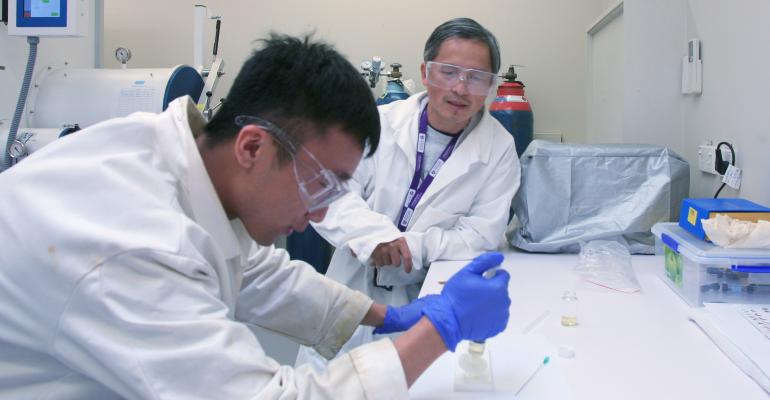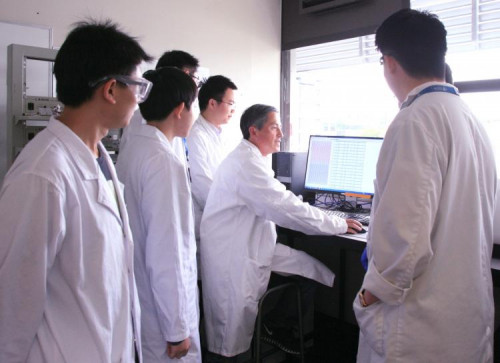
Dr Peng Cao
A self-healing solution for battery tech
Battery technology is a science hot-spot around the world. Multimillion-dollar research companies in the United States, China, Japan and Europe are racing to find the next big capacity boost to overtake the current front-runner – lithium-ion batteries.
In New Zealand, SfTI researcher Peng Cao and his team at the University of Auckland believe they can contribute to next-gen batteries with a new kind of battery anode, which is the part that accepts current into the battery during charging.
Battery anodes are currently made from graphite. Peng’s team are working on silicon as a medium for the new anode, which could in theory increase battery capacity by up to 1000 percent. Silicon is not a novel idea, but Peng says there’s always been a big problem with it – it’s not thought to be rechargeable.
“So that’s what we’ve been trying to solve. When silicon is recharged, its volume expands by about three times, and then as it discharges, it shrinks again. If you think of it like a balloon, it’s not long until it pops,” Peng says.
He says researchers around the world are trying various ideas with silicon, such as containing it in a confined space so it doesn’t expand too far.
“Our blue-sky idea was to use a self-healing silicon polymer, which is like what the medical field uses for artificial skin. The idea is that the polymer self-heals so the silicon restores back to its original shape.”
Peng says the team have so far been able to show that the silicon can successfully be stretched and shrunk through up to 200 recharging cycles– with no popping.
“That’s great, but we’ve got a way to go. Just think about how many times you want to be able to charge your cell phone battery before it dies.”
Getting this far is an awesome achievement for Peng and his team, Jianyong Jin, Saifang Huang and Yuguang Pu.
Peng says when their SfTI seed project draws to a close in 2019, the team’s next steps will be to secure more funding to continue the work and bring the number of recharging cycles up to commercial levels of 500 to 2000+. The team will also publish their results and will be looking to make more connections within the international battery industry.
“New Zealand doesn’t make batteries, so it would be extremely difficult to commercialise the ideas here, but we’ve been quite excited by the progress we’ve been able to make with the science.”

Top image: Peng Cao (right) with SfTI-funded PhD student Yuguang Pu.